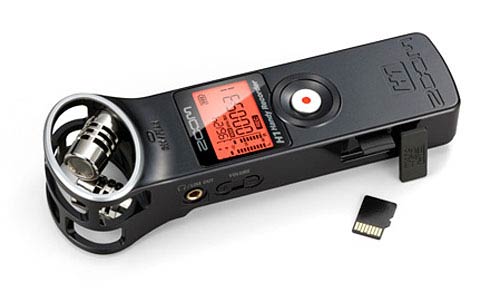- Published Oct 7, 2013 in Music 101
Part of becoming a great player means being able to listen objectively, identify problems and fix them. Recording yourself practicing is a huge step in the right direction.
Regardless of the style of music you play, your long-term goals or current level, you will find that your guitar skills soar from recording yourself often. The recordings you make during your practice sessions will not only serve as backing tracks for practice, they will also provide an efficient and effective way to critique, and therefore improve, your own playing. As you become accustomed to listening to your recordings in a focused and detached manner, you will hone your ability to listen deeply as you play and to make adjustments on the fly.
Since it isn’t necessary to produce a high quality sound recording for practice purposes, you won’t need sophisticated equipment - any device that reproduces pitch clearly, holds time accurately and is simple to use will do. Options include a smart phone, a digital recorder or an old-fashioned cassette recorder.

A simple digital recorder can become a powerful practice tool. For more flexibility, a removable memory card comes in handy.
Before recording, be certain that your guitar is in tune. Then, choose a song that you can play easily. Determine the optimum metronome speed and practice with the metronome until you feel ready to turn on your recorder.
If you are new to recording, be forewarned that you may find it surprisingly difficult to make a satisfying recording. When that happens, be patient. It’s normal to have to struggle through this initial phase, so be willing to shed the ego and buckle down to work. You’ll find that the benefits you gain will be well worth the effort!
Recording a Rhythm Track
The recording of the rhythm track (chord changes) should include the sound of the metronome, beginning with a series of clicks and, if possible, an audible count in. For example, just before the song begins, you will say, with the metronome, “one, two, three, four” in the case of a song in 4/4 time or “one, two, three” in the case of a song in 3/4 time. If you are plugging your guitar straight in to your device and therefore are unable to record your voice, you can record the lead-in beats by simply tapping the strings in time to the metronome for one measure before playing. The lead-in measure will allow you to come in properly when you play back with the recording later.
Record the song repeatedly (without breaks or pauses), so that when you play it back to practice exercises, melody or improvisation, you can work for a reasonable period without interruption. Be certain that you are precise in your rhythm. If the rhythm is not accurate, delete or erase the recording and try again.

The recording of the rhythm track (chord changes) should include the sound of the metronome.
Your goal is not to produce a recording that you want to share with others, but to get a recording that is straightforward and solid and will serve you in future practice sessions. As simple a task as that may seem, you will probably encounter some problems. Here are some solutions:
- If you make a mistake in your playing, try to recover (don’t stop playing) and stay on time. It is important that when you make your recovery, you do not add or leave out any beats in the song and that when you come back in, you are on the appropriate chord.
- If you have a lot of mistakes or the mistakes are too big to recover from or ignore, decrease the tempo.
- If mistakes continue to be a problem after slowing down, you will need to break from your recording project and practice the song until you feel ready to try recording again. This happens to the best – don’t give up, just do the work!
- If fatigue or frustration keep you from getting through more than one or two choruses of the song, there is no need to start completely over – you can turn off the recorder, regroup, and start back where you left off.
Enjoy the process and keep a sense of humor as you discover your own blind spots. Once you have started using your recordings, you will find that you quickly improve, not only in your playing, but also in the recording process. Chances are you will get hooked on coaching yourself!

